Intercostal muscle strain
Table of Contents
What is an intercostal muscle strain?
- An Intercostal muscle strain occurs when a muscle over-stretches, pulls, or it is a minor to major muscle tear. A strain of any part of the layers of the intercostal muscles can cause difficulty in breathing and chest muscle pain.
- Intercostal Muscle strains are the most common cause of chest pain. From 21 to 49 percent of all musculoskeletal chest pain occur from the intercostal muscles.
- Intercostal muscles strain according to the type and intensity of injury, strain of intercostal muscles causes rib/ chest pain, and upper back pain, and affect the breathing pattern, the patient will present with a shallow breathing pattern because of pain.
- Its damage affects the muscles between two or more ribs. You may strain or pull your intercostal muscles in different ways. These muscles are generally torn during some twisting motion. Pain may start either from a sudden injury, or can begin gradually from repetitive movements.
- your intercostal muscles located between your ribs, attaching them. They help maintain your upper body and help you breathe.
Where is an intercostal muscle located?
- Intercostal muscles are muscles that attach to the rib cage. Consist of 3 layers of muscles internal, external, and innermost layers combine to fill the space between the ribs.
- The external intercostal muscle is the outermost layer that lies directly under the skin appearing from the lower border of the rib above running obliquely and fitting into the upper border of the rib below. It expands the chest wall during breath in.
- Internal intercostals the intermediate layer originate from the costal groove near the inferior border of the one rib above to the superior border of the rib below, helping to collapse the Lung during expiration. The innermost intercostals muscle crosses more than one intercostal space and allows the internal and external intercostals in their function
Symptoms of intercostal muscle strain
- Pain You can feel a sharp pain at the time of injury, or it may come on more gradually. The pain will get worse when you stretch, twist, cough, breathe deeply, or sneeze.
- Tenderness The area of the strain between your ribs will be painful to the touch.
- Difficulty breathing Because breathing is so painful, you can find yourself taking small, shallow sips of air. This also leaves you short of breath.
- Swelling A incompletely torn or strained muscle will become inflamed. You can see some swelling between and around the affected area.
- Muscle tightness The injured muscles can feel tight when you breathe, reach, or twist.
Causes of intercostal muscle strain
- Intercostal muscle strain does not generally with day-to-day life activities, it occurs when the muscles are weakened, overexertion of muscles, direct trauma from a car accident, falling or blow from contact sports such as hockey, or repetitious torso twisting.
- A direct blow to the rib cage similar to falling, a car accident, or trauma from contact sports similar to football, or hockey. In which the intercostal muscles will tear or stretch as ribs are suddenly forced to move apart.
- Twisting the torso twisting while lifting, twisting from the dancing position/ yoga posture, and some sports similar to tennis, and golf. In which the ribs are moved apart from their normal range, excessive torso twisting may do during sports activity.
- Reaching above the prolonged time of overhead activities or lifting above the shoulder places undue stress on the muscles as we can see in painting the ceiling.
- A repetitive forceful movement similar to rowing, or hitting a tennis ball.
Activities that can cause you to strain these rib muscles include:
- Coughing or sneezing
- Reaching, like when painting a ceiling
- Chopping wood
- Lifting while twisting
- Participating in sports like baseball, tennis, rowing, or golf
- Falling
- Being hit in the rib cage, like in a car accident or during contact sports
Risk Factors
- Physical labor: such as activities that involve repetitive twisting, continue overhead activities, and constant weight lifting.
- High-thrust sports: where there’s Constance use of the arm, upper back, and shoulder put stress on intercostal muscles.
- Contact sports: when a direct immediate force hits the upper body.
Diagnosis of Intercostal muscle strain
- Your doctor will investigate your intercostal muscle strain by asking you about some injury history and doing a physical examination. They’ll want to know if you memorized falling or twisting when the pain originated. They’ll ask about any sports you play. They’ll check the tenderness over the affected area and test your range of motion and pain level during movement.
- Your doctor may suggest a chest X-ray to make sure your lungs weren’t bruised or punctured when you were injured.
Assessment
Subjective assessment
- History with associated symptoms
- Mechanism of injury:
- Inciting trauma direction and magnitude of injury force
- Repetitive trauma-faulty postural-related injuries
On objective assessment, there will be:
- Muscle Tenderness- to touch at the point of injury
- Swelling
- Bruising may appear within hours or days
Treatment of Intercostal muscle strain
- Treatment of intercostal muscle strain depends upon the severity of the injury, Doctor examines you, according to the severity, the conditions, and the assessment plan of treatment.
- The most significant time in the initial treatment of an intercostal muscle strain is the first 24 – 48 hours. This is when the increase of bleeding and swelling around the injured muscle occurs. To control the amount of swelling and, therefore, limit the stage of injury to the intercostal muscle, the muscle should be treated rested, and iced.
- If the patient has grade 1 and grade 2 muscle strains then the patient should take rest, apply ice and take painkillers. grade 1 and grade 2 muscle strains take 3 to 6 weeks to recover. Patients with grade 3 muscle strain should undergo surgery. grade 3 muscle strain takes around 12 weeks to recover.
Medical Treatment
For immediate
- Some doctors advise avoiding harmful pain medicines that can extend your threat of bleeding — similar to over-the-counter (OTC) medicine (naproxen sodium (Aleve) aspirin and ibuprofen (Advil, Motrin IB), — throughout the first 48 hours after a muscle strain. Acetaminophen (Tylenol) and others can be helpful in reducing pain during this period.
- A physiotherapist may help you to improve the muscle strength and stability of the injured joint or limb. Your doctor may suggest that you stabilize with a brace. For some muscle injuries, intercostal muscle sprint surgery may be called.
Hot and cold therapy
- Cold therapy can help ease your pain and decrease inflammation of the muscle. Apply a cold pack to the injured area for 20 minutes at a time, 3 to 4 times a day for the first two days. You may use an ice bag, a gel cold pack, or a plastic bag filled with ice.
- After an injury in the first 48 hours, you may want to start using heat on the injured area. Heat may help relax and loosen the muscles so you can do your day-to-day life. You may apply heat for 20 minutes at a time with a heating pad or a warm damp towel.
Physiotherapy treatment
The aim of activity treatment is
- Relieve intercostal muscle pain
- Reduce muscle swelling
- Increases muscle strength.
- Improve full mobility of the ligament and corresponding joint
- Restore the patient’s confidence
- Restore the patient’s whole functional activity
Phase one: one to two weeks
Physiotherapy rehabilitation can be started after 48 hours of injury, For the first few days give an electric modality to relieve muscle swelling and muscle pain
Ultrasound
- Ultrasound has been used for tissue repair
- Increases blood circulation and joint mobility.
- To reduce muscle swelling and pain
Cryotherapy
- Inflammation and swelling can be reduced by applying cryotherapy in form of ice packs, and cold water baths to the affected area. Continuous application of colds several times a day for 15-30 minutes at a time is recommended.
TENS
- Transcutaneous electrical nerve stimulation (TENS) may be able to help reduce pain and muscle spasms.
Phase two: three to six weeks
First few days start pain-free mild to moderate exercise
1) Diaphragmatic breathing exercise (Supine position)
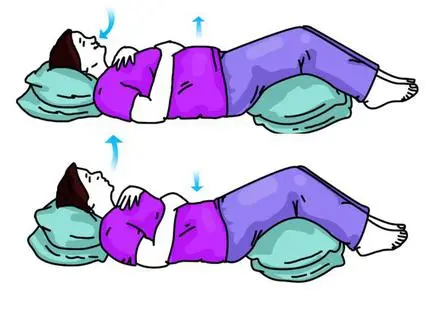
- Supine on your back in bed with your knees bent. You may use a pillow under your head and your knees for support if that’s more comfortable.
- Place one hand on your upper chest and one hand on your stomach, just below your rib cage.
- Breathe in slowly using your nose, letting the air in deeply, towards your stomach. The hand on your chest should continue, while the one on your stomach should up.
- Tighten your abdominal muscles and let them fall inward as you exhale and continue pursed lips. The hand on your stomach should move down to its normal position.
2) Diaphragmatic breathing exercise (Sitting position)
- Sit up straight on a table and lengthen the distance between your belly button and chest.
- Remain your shoulders relaxed.
- Remain the pelvis in a neutral position (Sit on your sitting bones).
- Place your hands on another side of your lower ribs.
- Breathe in slowly through your nose. As you breathe in feel your ribs expanding outwards and upwards. Breath is generated by trunk expansion in three directions front, sides, and back. Breathe out from your nose. place your hand on your lower rib As you exhale feel your lower ribs moving inwards
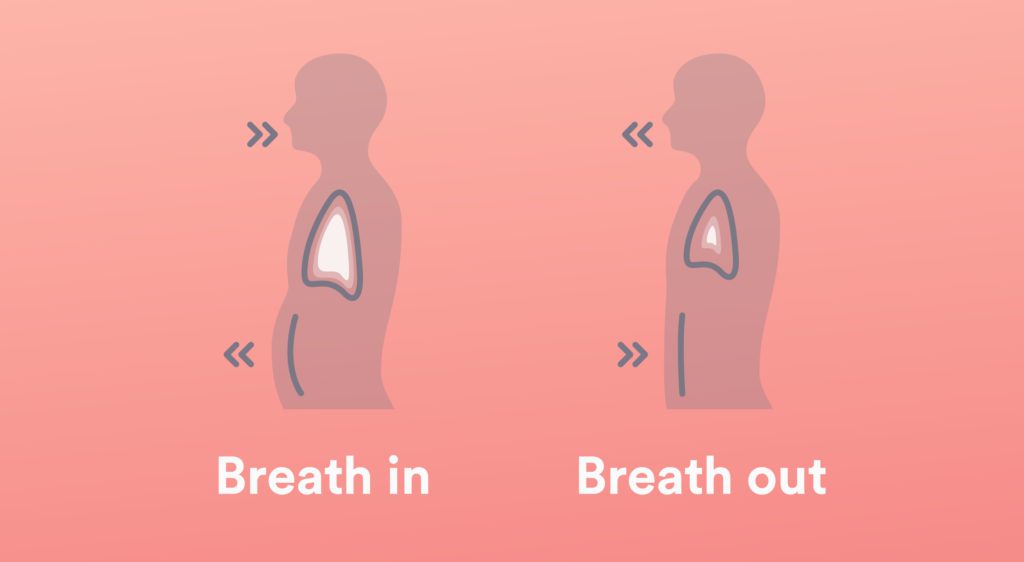
- While standing or sitting position, draw your elbows back slightly to allow your chest to expand.
- Breathe deeply through the nose.
- Retain your breath for a count of 5 to 10.
- Slowly release your breath by breathing out through the nose
4) Pursed Lips Breathing

- Pursed-lip breathing is a breathing technique that consists of breathing out through tightly pressed (pursed) lips and breathing in through the nose with the mouth closed. It is an easy breathing technique that helps with making deep breaths slower and more intentional.
- This technique has been found to benefit people who have intercostal muscle strain,anxiety-associated lung conditions eg emphysema, and chronic obstructive pulmonary disease (COPD)
5) Abdominal bracing
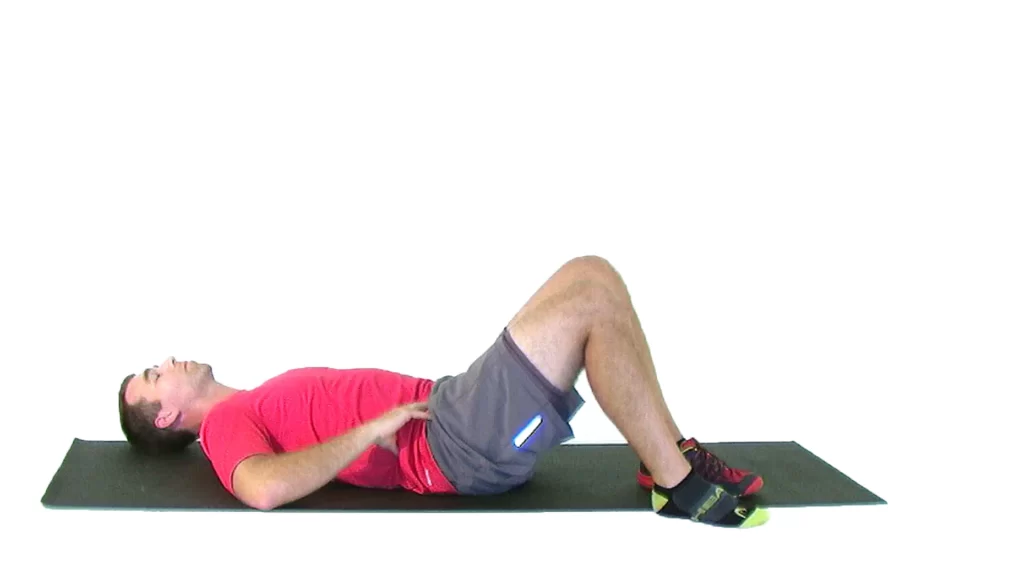
- supine on your back, and tighten your belly muscles as you draw your navel down towards the floor.
- Hold 10 to 20 second
- Repeat 15 times
- For progress do more repetition
Phase three: six to twelve week
Gentle physical therapy may be suggested to stretch tender muscles after an intercostal muscle injury. Depending on the severity of the injury, these exercises may include:
1) Gate pose
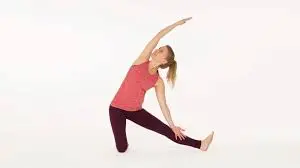
- An everyday yoga position stretches the intercostals at the side of the thorax.
- On comfortable padding, lift up on both knees and extend the right leg straight to the side, with the kneecap facing up and the foot on the ground as much as possible.
- Extend both arms to the sides. also, bend the upper body toward the right, so the right arm rests on the extended leg.
- Continue to reach the left arm overhead so a stretch is felt in the left caricatures.
- Hold the stretch between 15 and 30 seconds, also repeat on the left side.
2) Forward Stretch
- Used to stretch the intercostal muscle toward the back of the thorax.
- Sit on the ground with the left leg straight in front of the body and the right bent so the sole of the foot touches the knee.
- Then, tilt forward as far as is comfortable over the right leg, rotating the torso slightly and touching both palms to the ground, if possible.
- A stretch must be felt in the back intercostal muscles on the left side.
- Hold this stretch position for 15 to 20 seconds,
- do this stretch on both sides
3) Rotation in Lying
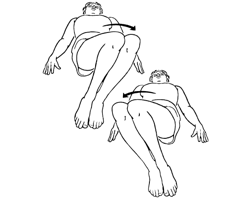
- Begin this exercise lying on your back. slow take your knees from side to side as far as you can go without pain and provided you feel either nothing or, no more than a gentle to moderate stretch. do 10 times to each side
- do the pain-free exercise
4) Cobra Pose abdominal stretch

- Lay down your face on the bottom of the floor. this is generally the starting position.
- Place both hands toward your shoulder, elbows are bent. With the hips flat on the floor, push the torso upward, while looking straight in front. This will stretch the abdominal muscles.
- Hold this cobra pose for 10 to 20 secs,
- Then back to the normal position.
- Repeat this 2- 4 times.
5)Abdominal crunches
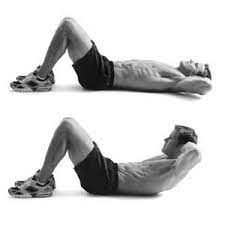
- This is generally a great exercise to do this will not do too much stress on the lower back and spine.
- For this exercise, you have to go Lie on your back and band the knees to a comfortable position, keep your arms straight ahead of the chest now curl the head, shoulders, & upper back down the ground.
- The lower back should be in touch with the floor; you should only rise 2 to 3 inches and exhale as you rise.
- Hold for 10 to 15 seconds.
- Slowly back to the normal position.
- Repeat 15 times.
What to avoid with Intercostal muscle Strain?
- Some activities can affect the body’s natural healing processes and potentially lead to a longer, more painful recovery, similar to smoking and compression wrapping theraband.
- It may already be challenging and painful to take deep breaths when the intercostal muscles are injured, so it’s recommended to stop smoking to help any further problems with respiration while the muscles heal. Avoiding secondhand smoke as much as possible is also a guide.
- Additionally, while compression wrapping strained muscles may be advised for some injuries, it’s generally not recommended for intercostal strains. banding the chest can make breathing more complicated and may cause or worsen bruising in the injured muscles.
How to sleep with Intercostal muscle strain
- Use a reclining mattress and bed frame to rest while sitting upright.
- You can use a specialized bed wedge to realize the same effect.
- Be sure to use pillows to help keep you upright after you fall asleep and remain your neck comfortable.
- Consider some mild breathing exercises before bed.
- Place a pillow under the knees as well, to prevent or decrease associated upper back pain
FAQs
- How long does it take for an intercostal muscle strain to repair?
The average intercostal muscle strain takes about four to six weeks to heal, but the healing process may be shorter or longer depending on the severity of the intercostal muscle strain.
- How did I hurt my intercostal muscles?
Intercostal muscle strain doesn’t happen usually with day-to-day life activities, it occurs when the muscles are weakened, overexertion of muscles, direct trauma from falling or car accident, or blow from contact sports such as hockey, or repetitive twisting movement.
- How serious is an intercostal strain?
Intercostal muscle strains are basically not very serious, but other forms of chest pain may be. Seeing a doctor can help to check out other conditions to confirm that your chest pain is only happening from an intercostal muscle injury.
- What to avoid with Intercostal muscle Strain?
Avoiding secondhand smoke as much as possible is also a guide. Additionally, while compression wrapping strained muscles may be advised for some injuries, it’s generally not recommended for intercostal strains. banding the chest can make breathing more complicated and may cause or worsen bruising in the injured muscles.
- which exercise is used for intercostal muscle strain?
strengthing exercise
1) breathing exercise
2)diaphragmatic breathing exercise
3)pursed lip breathing exercise
4)abdominal crunches
stretching exercise
1)gate pose
2)cobra pose
3)forward stretch
4)rotation on lying

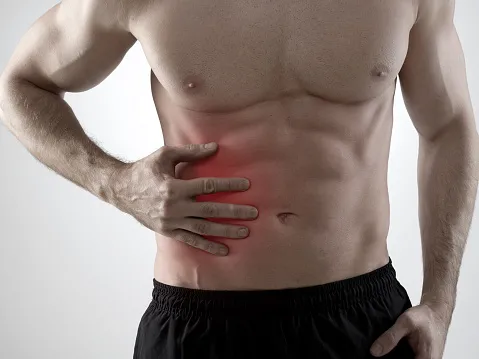
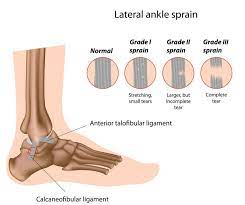
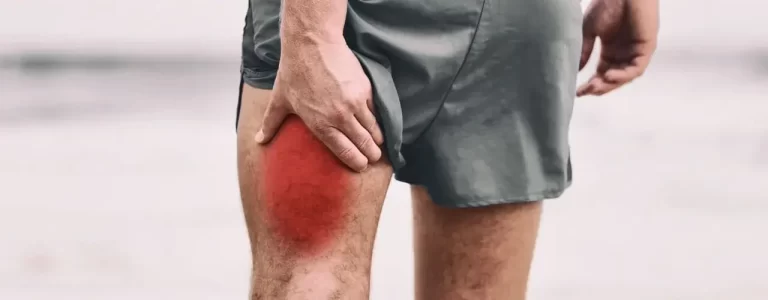
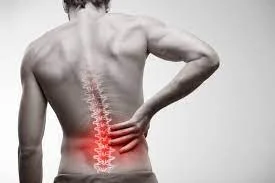
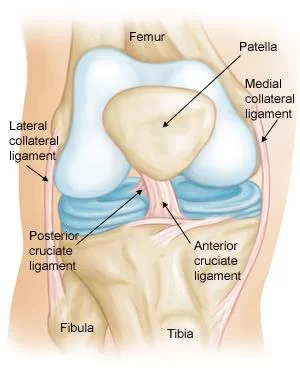
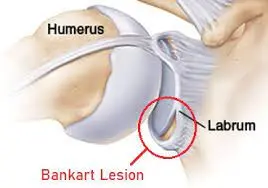
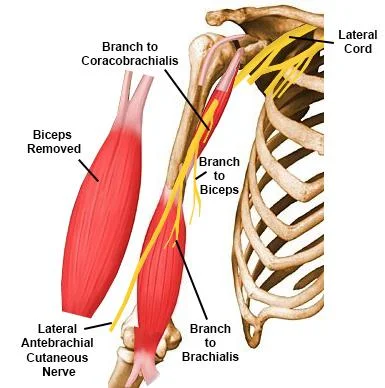
One Comment